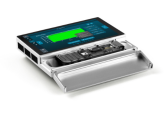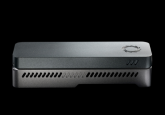Whole-genome sequencing: getting started with small genomes

Microorganisms are the most abundant life forms on Earth, playing crucial roles in health, disease and many environmental processes. Full characterization of microbial genomes is advancing numerous fields of research. In health, sequencing the pathogens behind disease outbreaks is furthering our understanding of their origins and transmission. In agriculture, timely detection of animal and plant pathogens is of great importance to animal welfare and food production.
Nanopore sequencing provides researchers with many advantages for whole-genome sequencing, including:
- Easier assembly – long sequencing reads mean fewer fragments to assemble
- Rapid time to results with real-time analysis
- Long reads can span entire structural variants and repeat segments in single reads
In this guide, you will learn more about:
- The advantages of nanopore technology for whole-genome sequencing
- Nanopore sequencing devices
- How to choose the right kit
For more information, check out:
- White Paper: Delivering the future of genomic pathogen surveillance
- White Paper: Large insights into microorganisms
- Webinar: Combatting outbreaks: rapid avian influenza genomic surveillance at the source
- Case Study: Rapid surveillance of monkeypox virus from complex metagenomic samples
This content was provided by Oxford Nanopore.





